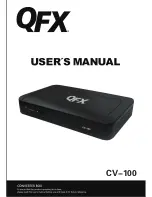
5
nen über die Funktionstasten F1 bis F4 und F0, die einer
zweiten Decoderadresse zugeordnet werden, geschaltet
werden. Die Funktionen F10 bis F12 stehen im Motorola-
Format nicht zur Verfügung.
Die Zuordnung der Funktionstasten zu den Funktionsaus
-
gängen des Decoders ist frei wählbar. Sie können einem
Funktionsausgang mehrere Funktionstasten zuordnen.
SUSI-Schnittstelle
An den Decoder können Sie ein SUSI-Modul anschlie
-
ßen, das auch über den Decoder programmiert werden
kann. Das Auslesen der Daten des SUSI-Moduls ist über
den Decoder nicht möglich.
Der Lokdecoder überträgt den Zustand der Funktionen
und die an der Zentrale eingestellte Fahrstufe an das
SUSI-Modul. Dadurch werden geschwindigkeitsabhän
-
gige Funktionen des SUSI-Moduls beeinflusst (z. B. Mo
-
torgeräusch).
Effekte der Funktionsausgänge
Für alle Funktionsausgänge können einzeln die fol
-
genden Effekte eingestellt werden:
Dimmfunktion:
Die Ausgangsspannung kann durch ent
-
sprechende Programmierung reduziert werden.
Anwendungs beispiel: Die für den Analogbetrieb vor-
gesehenen Birnchen älterer Fahrzeuge können gedimmt
werden und müssen dann nach dem Einbau des De
-
coders nicht ausgetauscht werden. Es besteht außer
-
dem die Möglichkeit, die Spannung in Abhängigkeit von
der Fahrstufe zu dimmen. Damit lässt sich z. B. eine
schwache Rauchentwicklung beim Halt oder eine ausge
-
schaltete oder gedimmte Führerstandsbeleuchtung wäh-
rend der Fahrt realisieren.
Kickfunktion:
Die Funktionsausgänge können so einge
-
stellt werden, dass sie zunächst für maximal ca. 20 Se
-
kunden die volle Spannung erhalten und dann gedimmt
werden. Anwendungs beispiel: Bei einigen Typen elek
-
trischer Kupplungen wird die volle Spannung zum Ent
-
kuppeln benötigt. Um die Kupplungen zu schonen, muss
anschließend die Spannung reduziert werden. Die Aus
-
gänge können ausserdem so programmiert werden, dass
nach dem Auslösen der Kickfunktion die Lok automatisch
ein Stückchen vom entkuppelten Waggon wegfährt.
Blinkfunktion:
Frequenz und Tastverhältnis der Blink
-
lichter lassen sich einstellen. Anwendungsbeispiel: Ein
-
zel- und Wechsel blinklichter oder Strobe (Aufblitzen).
Fahrtrichtungsabhängiges Schalten:
Jeder Ausgang
kann so programmiert werden, dass er in Abhängigkeit
von der Fahrtrichtung geschaltet wird.
Sonderfunktion für Fahrstufe 0:
Eine Funktion kann so
programmiert werden, dass sie bei Fahrstufe 0 andere
Funktionen abschaltet und bestimmte Funktionsausgän-
ge einschaltet. Anwendungsbeispiel: In manchen BWs ist
es üblich, dass bei kurzfristig abgestellten Loks vorn und
hinten das Schlusslicht eingeschaltet wird.
Rückmeldung mit RailCom
®
RailCom
®
ist ein Protokoll zur bidirektionalen Kommuni
-
kation in digitalen Modellbahnanlagen, die im DCC-For
-
mat gesteuert werden. Es ermöglicht z. B. die Rückmel
-
dung der Adresse und der CV-Einstellungen von den De
-
codern zur Digitalzentrale oder zu speziellen Empfänger
-
SUSI interface
A SUSI module can be connected to the decoder 5248
and programmed via the decoder. It is not possible to
read the SUSI module´s data via the decoder.
The locomotive decoder transmits the function status and
the speed level set at the central unit, to the SUSI mod
-
ule. This affects the SUSI module´s outputs depending
on the speed level (e.g. motor sound).
Effects of the function outputs
It is possible to set the following effects for all function
outputs individually:
Dimming
: The voltage applied to an output can be re
-
duced by programming the decoder accordingly. Exam
-
ple of use: The electric bulbs of older vehicles made for
analogue operation can be dimmed and thus must not be
exchanged after the mounting of the decoder. In addition,
it is possible to dim the voltage depending on the speed
level. This enables weak smoke generation during halts
or a switched off or dimmed cab lighting while the train
is moving.
Kick function
: It is possible to set the function outputs
so that they get the full voltage first for up to 20 seconds
and then are dimmed. Example of use: For some types of
electric couplings you need the full voltage for decoupling
and the voltage then reduced to protect the couplings. In
addition it is possible to program the outputs so that the
locomotive moves a short distance from the disengaged
carriages automaticalley after releasing the kick function.
Flashing
: Both the frequency and the keying ratio can be
set. Examples of use: single and alternating flash lights
or strobe lights.
Switching on and off depending on the direction of
travel
: Any output can be programmed to be switched on
and off depending on the direction of travel.
Special function for speed level 0
: It is possible to pro
-
gram one function to switch off other functions or switch
on special function outputs at speed level 0. Example of
use: With some layouts it is customary that the tail lamps
of parked locomotives have to be temporally set at the
front and the back.
Feedback with RailCom
®
RailCom
®
is a log for bi-directional communication in dig
-
ital model railway layouts controlled in DCC-format. It al
-
lows e.g. the feedback of the address and the CV values
from the decoder to the digital control unit or to special
receivers (so-called detectors). The decoders must be
designed to send the RailCom messages.
The decoder 5248 sends (continuously) the (basic, ex
-
tended or consist) address to the detectors (so-called
RailCom broadcast datagramm) and transfers a CV mes
-
sage after a DCC CV read-out command.
Sending RailCom messages is only possible in layouts
with a DCC signal on the rails. That is the reason why
it is not possible to use the RailCom-function in a pure
Motorola environment, but only when at least one other
locomotive or function decoder on the layout is controlled
in DCC format.
RailCom
®
ist ein registriertes Warenzeichen der /
is a registered
trademark of
Lenz-Elektronik GmbH, Gießen.


































